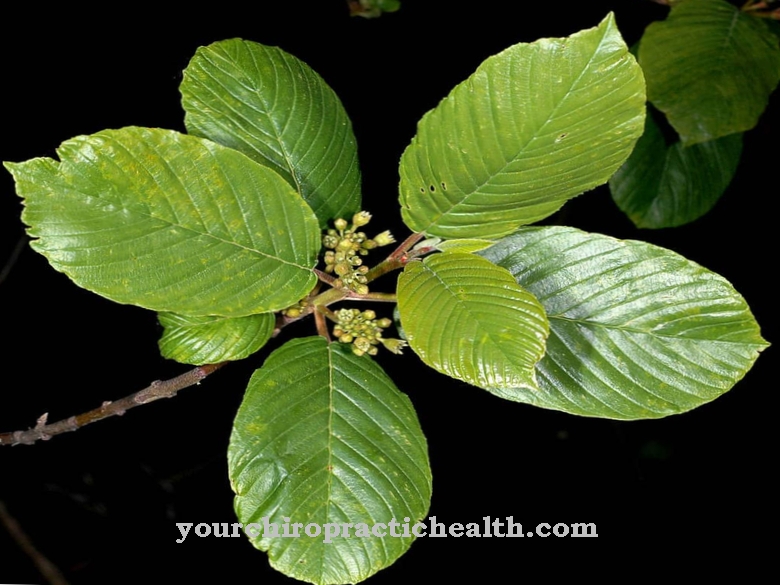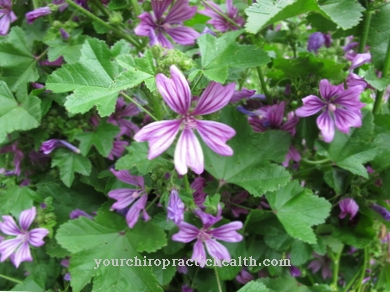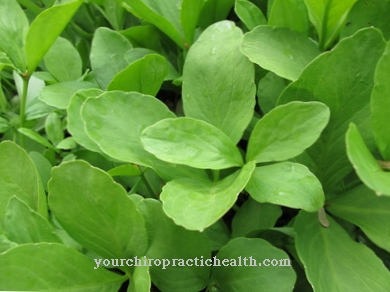Occurrence & cultivation of the real lung lichen
The Real lung lichen (Lobaria pulmonaria) grows in the form of a lichen preferentially on oak, beech and maple trees. The medicinal plant is preferably used as a homeopathic, for which the lichen is processed. Characteristic of this plant are the large, lobed, olive-brown leaves that turn olive-green to grass-green when wet. These large leaves are also known as thalles.The common lung lichen can also be found on rock. It is a highly endangered plant species that is considered an indicator of an intact ecosystem, as it is very sensitive to pollutants in the air. For this reason, its range is nowadays very limited and it can be found almost exclusively on the northern edge of the Alps above 900 meters above sea level.
The lobes reach a size of one to three centimeters, are deeply divided and criss-crossed with pitted dents and a filigree vein network.The common lung lichen prefers wet locations with high levels of precipitation and occurs both in Borreal areas and in Mediterranean mountain locations.
Effect & application
The name lung lichen is mainly due to its use as a medicinal plant for various diseases of the respiratory system. The main area of application is the so-called "descending infection", which begins with an inflammation of the paranasal sinuses (sinusitis) and descends into the throat and bronchi. A clinical indicator is dry cough, which is accompanied by a severe headache.
Sticta pulmonaria is the first choice for people who are plagued by hay fever with severe sneezing attacks and inflammation of the sinuses in spring and summer. The real lung lichen also has proven itself in catarrhs, which are accompanied by watery eyes and severe headaches. These symptoms are often accompanied by coughing and a strong feeling of pressure in the chest area. Homeopaths like to prescribe Sticta pulmonaria in the case of visual disturbances accompanied by sore eyes.
The real lung lichen can have a positive effect on sleep disorders caused by nocturnal coughing attacks. It also takes action against nervousness and helps children with post-operative regeneration. Homeopathy also knows its use in patients who suffer from inflammation of the small joints.
In the case of knee bursitis, patients will experience relief after taking Sticta pulmonaria regularly. The remedy has also proven itself in rheumatic pain and hot joints. Sticta pulmonaria is very effective in combination with other homeopathic remedies. Combined with the broad spectrum remedy Bryonia Alba (white bryony) in potencies C7 to C9, the drug brings about a general improvement in respiratory diseases that are accompanied by severe headaches.
Bryonia is a proven headache remedy. In the C15 potency, Sticta pulmonaria is often used in combination with Arum triphyllum (three-leaved arum) and Aconitum napellus (blue monkshood) to combat inflammation of the nasal mucous membranes. Associated with Sambucus nigra (black elder), the lung moss acts against a nasal congestion caused by allergies, which occurs in very dry and cold air. It exposes the airways and regulates secretion formation.
How versatile Sticta pulmonaria is, shows that this remedy not only combats ENT diseases, but also has a positive effect on digestive problems. It is effective against heartburn and gastric acidosis. Depending on how severe the symptoms are, the globules are taken several times a day.
If the patient suffers from lung diseases and / or other respiratory diseases such as a cold, sore throat or dry cough without clinical complications, he takes five globules, which correspond to one tablet, every two hours. The intake takes place over four days.
If the symptoms improve, the time intervals lengthen and the intake of five globules three times a day is sufficient. The homeopathic medicine is also available in drop form in the potencies D3, D6, D8 and D12.
Importance for health, treatment & prevention
The true lung lichen suits special mental disorders. The main symptoms are mental confusion and inattention. Patients for whom sticta pulmonaria is indicated tend to talk a lot and like to attract attention. They are restless, find it difficult to remain silent and to concentrate. The sticta type doesn’t care whether someone is listening or paying attention. Lung moss is ideal for migraine attacks that are aggravated by noise and light.
Dull headaches, chest tightness and all respiratory diseases such as sinusitis, cough, face and eye pain, hay fever, sore throat, rheumatism, nervousness and sleep disorders are alleviated and can disappear completely if taken over a longer period of time.
According to the classical indications of homeopathy, Sticta pulmonaria helps patients who have at least two of the symptoms mentioned above, which are related to the circumstances under which the model deteriorates. In patients for whom sticta pulmonaria is indicated, the condition worsens not only when exposed to light and noise, but especially at night and generally when lying down.
Sudden changes in temperature also contribute to the deterioration in health. Sticta patients feel better in the fresh air. The homeopathic medicine can be used at any age and helps children to alleviate various typical teething problems. During pregnancy and breastfeeding, Sticta pulmonaria should only be taken after consulting a doctor.

















.jpg)







.jpg)


